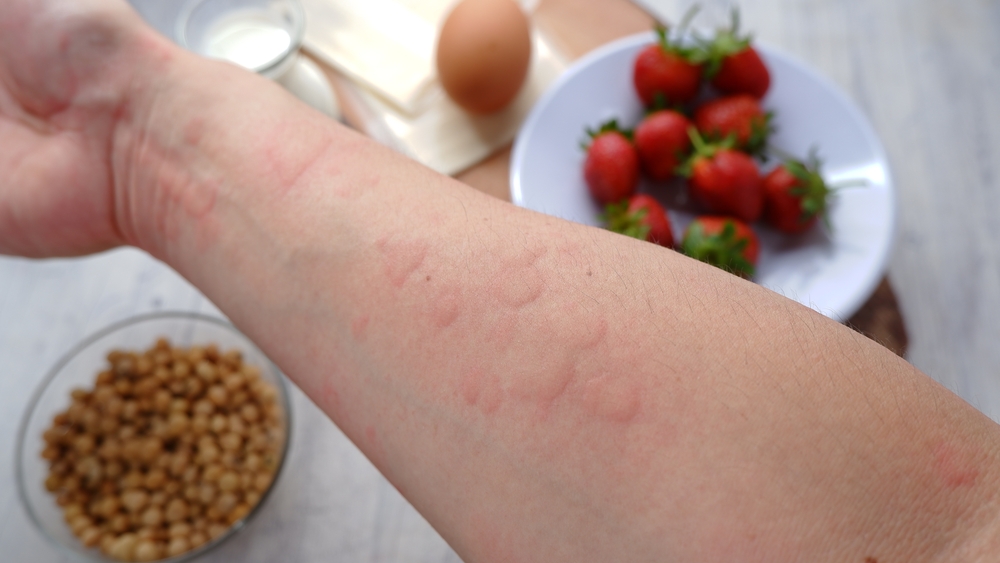Dr. Ted Rosen discusses a recent paper in which author Peter A. Lio, MD, writes that educating AD patients about the range of food reactions, how rarely they are reported to occur, and potential risks of dietary modification, can build trust and rapport between dermatologists and their patients.

Ted Rosen, MD, FAAD
Professor of Dermatology, Baylor College of Medicine, Houston, Texas
“In a society with unprecedented attention focused on food, it is hardly surprising that many suspect food allergy to be the direct, underlying cause of atopic dermatitis flares,” said Ted Rosen, MD, referring to a recent paper on the topic by Peter A. Lio, MD, in Cutis.1
Food allergy is relatively uncommon, estimated at 3.4% to 7.6% in several published studies.
The prevalence goes up among those with atopic diathesis, said Dr. Rosen.
It’s also not surprising that about 75% of parents have attempted dietary manipulation as a means of AD control in their children, he said.
“However, correlation between two entities does not necessarily imply and certainly does not prove a causal relationship.”
According to Dr. Rosen, there are two distinct types of negative food-related events:
- Adverse food reactions (gastrointestinal distress following dairy ingestion in those with lactose intolerance, flushing following alcohol ingestion in those with aldehyde dehydrogenase 2 enzyme deficiency)
- True immune-mediated allergic reactions
“Testing for immune-mediated food allergy is imperfect, consisting of both immune enzymatic serum assay based on immunoglobulin E (IgE) and skin prick testing. Both have variable sensitivity and specificity.”
The gold standard is double-blind, placebo-controlled food challenge, which Dr. Rosen said is time consuming, labor intensive, and expensive.
“An immediate-type reaction, such as urticarial, angioedema, and bronchospasm, are fairly common (40%) in those with AD. But this does not reveal an occult cause of AD flares. Late reactions to food challenge in those with AD, consisting of disease flares, only occur in around 2% of patients.”
Looking at this issue in the converse manner, some have recorded what percentage of AD patients experience a prolonged improvement in their skin condition following withdrawal of specific foods, said Dr. Rosen.
“Similar to the food challenge approach, AD improvement was not common. Two percent of those with mild AD, 6% of those with moderate AD, and 4% of those with severe AD underwent disease improvement following food withdrawal.”
One manner in which foods may drive AD flares might be by induction of increased inflammation, said Dr. Rosen.
“In other words, some food items may be pro-inflammatory in general. It is very hard, however, to verify this hypothesis.”
The question then remains what to do with a given patient, particularly a child, with AD when food as a provocative agent is brought up, he said, and provided these points:
- In general, highly restricted diets—especially empiric in nature—are likely not best recommended. Such diets may lead to nutritional and caloric deficiencies.
- Elimination diets may actually lead to new immediate-type hypersensitivity reactions, presumably due to loss of tolerance over time. One retrospective study of 298 patients with AD who were placed on elimination diets showed that 19% developed new food allergies, including anaphylaxis to milk and eggs.
- Highly restrictive diets are not easy to follow. Attempting to do so may increase the patient’s underlying stress level and thereby lead to AD flares.
- Because adherence to dietary modifications takes considerable time and effort, it may lead to distraction from or delay of other more important aspects of therapy (such as adequate moisturization and timely medication administration).
Reference:
- Lio PA. Dietary Triggers for Atopic Dermatitis in Children. Cutis. 2022 Nov;110(5):264-266. doi: 10.12788/cutis.0640. PMID: 36638380.


